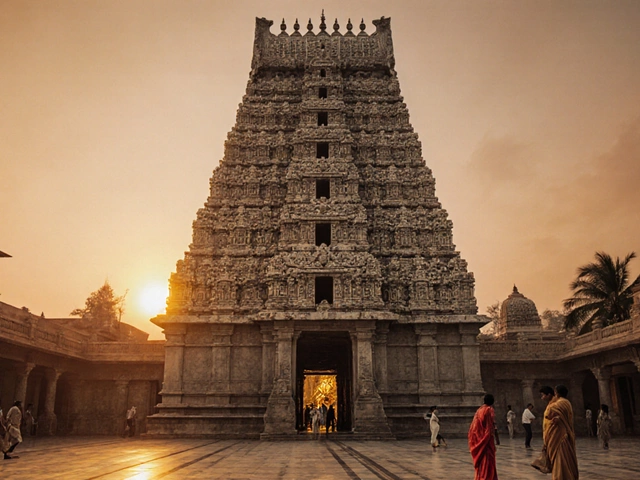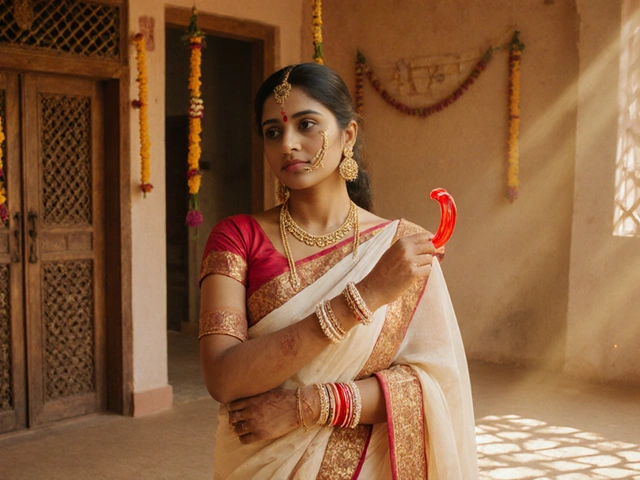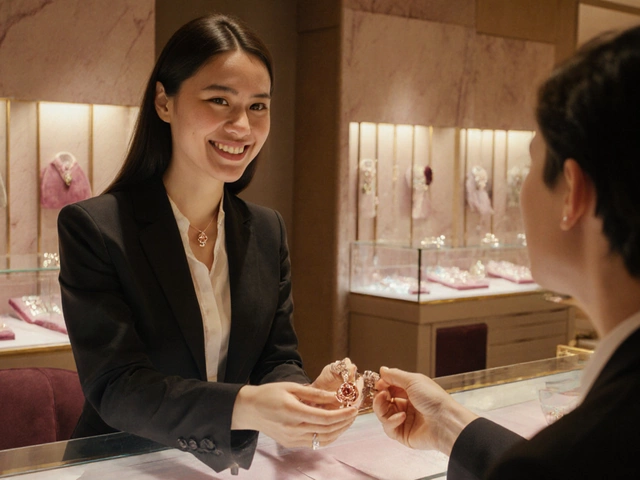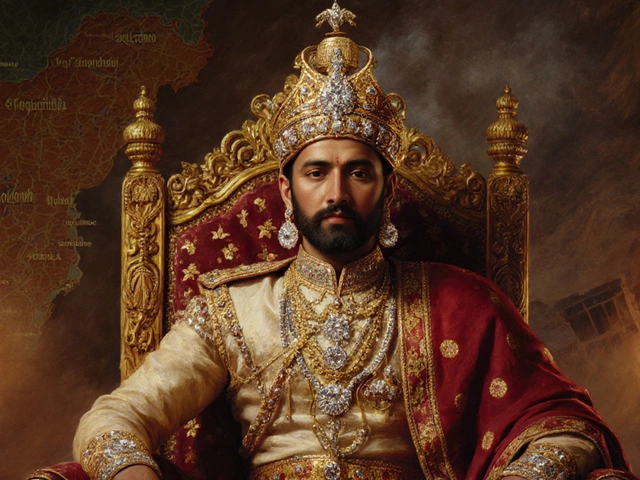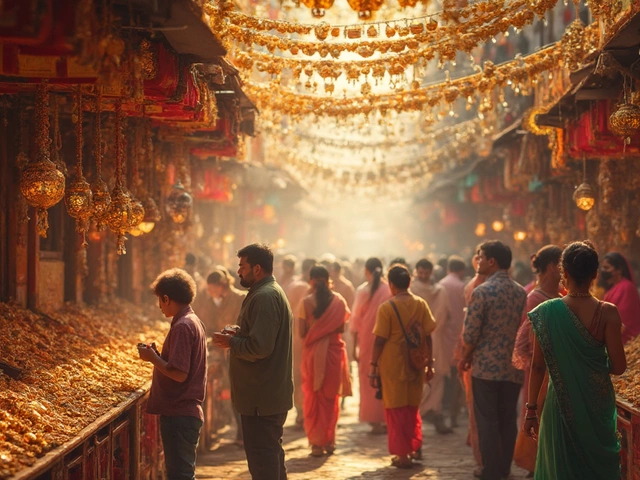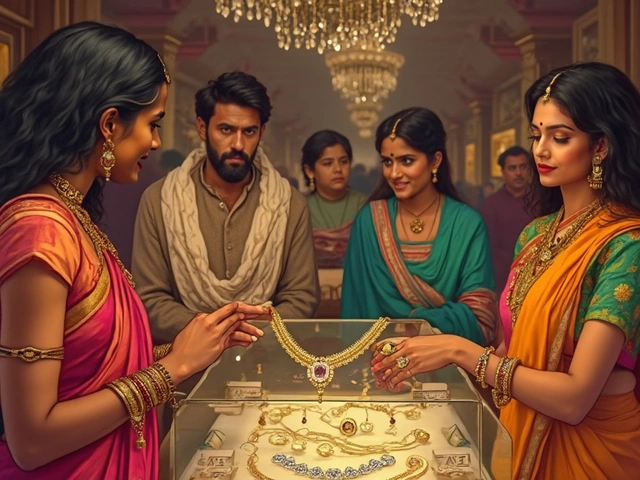Cultural Ornaments: Traditional Indian Jewelry & Accessories
When talking about Cultural Ornaments, the wearable symbols that reflect history, belief, and regional identity in India. Also known as traditional jewelry, they blend art and ritual in everyday life. You’ll also see related pieces like waist chains, often called kamarband, made of gold, silver or beads and tied to marital customs, bangles, circular bracelets worn by women for status, health, or celebration, mangalsutra, the sacred necklace that marks a married Hindu woman’s bond and gold jewelry, the timeless metal that forms the base of many cultural ornaments. All these items share a common thread: they convey identity, tell stories, and often carry spiritual meaning.
Why Cultural Ornaments Matter
From a practical standpoint, cultural ornaments serve as markers of occasion. A bride’s kamarband signals fertility hopes, while a set of bangles can indicate a woman’s marital status or regional roots. The presence of a mangalsutra instantly tells you someone is married, and the specific design often hints at the family’s community or state. These symbols don’t just sit in a museum; they’re alive, changing with fashion while keeping core meanings intact.
Take the Indian waist chain, for example. Historically, it was a protective talisman against evil and a symbol of prosperity. Modern designers now blend traditional metalwork with contemporary motifs, making it a versatile accessory for both weddings and daily wear. Key attributes include the type of metal (gold, silver, enamel), added gemstones (rudraksha, turquoise), and regional patterns (Rajasthani scroll work, South Indian temple motifs). These factors determine not only the chain’s visual appeal but also its cultural weight.
Bangles, on the other hand, present a fascinating variety. You’ll find three main categories: traditional glass or lacquer bangles, modern fashion bangles made from acrylic or metal, and spiritual bangles infused with gemstones tied to chakras. Each type carries its own set of rules—like the common belief that a broken bangle signals an omen, or the practice of wearing a specific number of bangles during festivals. Understanding these nuances helps you pick the right set for any event, from a casual brunch to a grand wedding.
The mangalsutra versus thali debate illustrates how a single ornament can evolve across cultures. While both are neckpieces, a mangalsutra typically features a black pendant that wards off negativity, whereas a thali often includes a sacred 'pavitra kumbh' in a gold or gold-plated setting. Both serve as marriage symbols, but their designs, materials, and regional preferences differ dramatically. Knowing which one fits a particular ceremony can make a huge difference in honoring tradition.
Gold jewelry remains the backbone of cultural ornaments. Yet, not every color works well with gold—bright reds or neon greens can clash, while deep maroons, emeralds, and ivory complement it beautifully. The choice of gold shade—yellow, white, or rose—also influences which outfits and occasions are most appropriate. For example, white gold pairs nicely with cooler tones, while rose gold shines against warm fabrics like silk or handloom cotton.
Spiritual seekers often turn to chakra jewellery, a sub‑category that links gemstone placement to the body’s energy centers. A chakra necklace might align seven stones—amethyst, lapis, emerald, citrine, ruby, carnelian, and clear quartz—with the corresponding chakras, offering both aesthetic appeal and purported health benefits. This type of ornament bridges the gap between tradition and wellness trends, appealing to modern consumers who want meaning beyond mere decoration.
All these pieces—waist chains, bangles, mangalsutra, gold sets, and chakra accessories—interact with everyday Indian attire. Whether you’re dressing in a cotton kurti for a market day or a silk sari for a family function, cultural ornaments add that extra layer of identity and flair. The posts below dive deep into each of these items, offering practical tips, historical background, and styling advice to help you choose the right ornament for any moment.
Ready to explore specific guides, from how to wear a kamarband correctly to the best colors to pair with gold jewelry? Scroll down to find detailed articles that answer those questions and more, giving you the confidence to add the perfect cultural ornament to your collection.
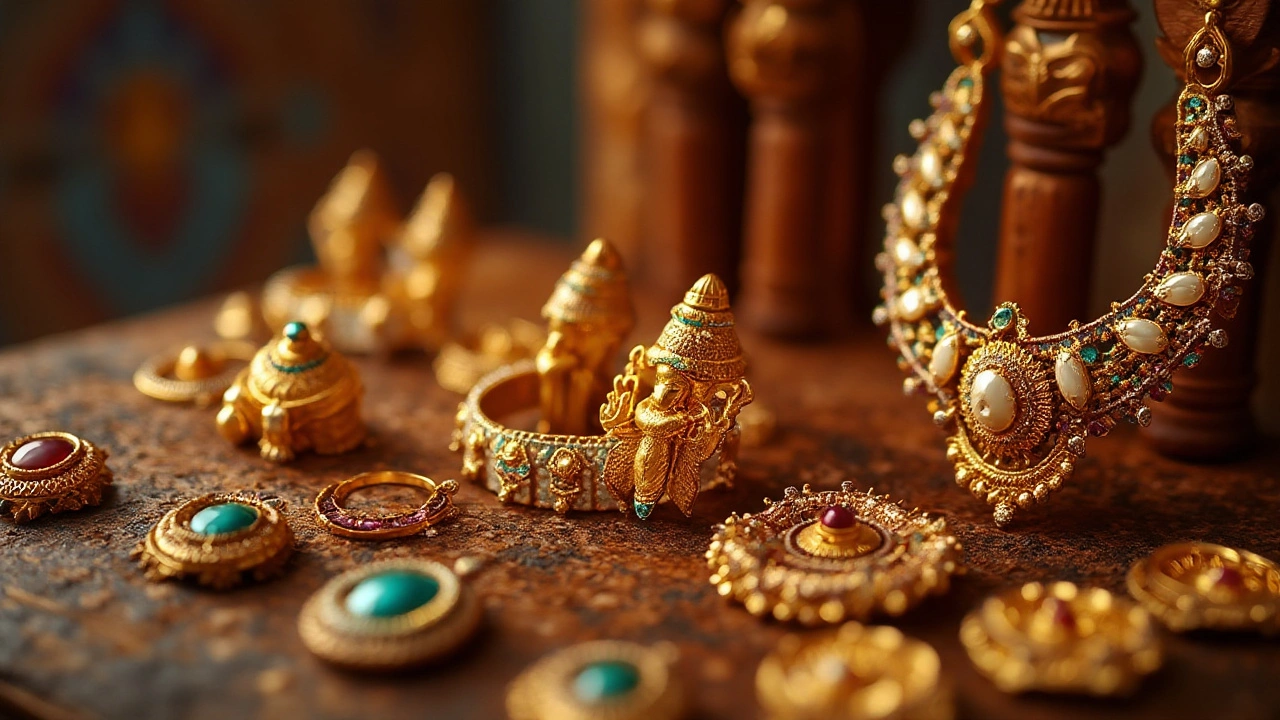
The Allure of Nakashi Temple Jewellery: A Detailed Exploration
Nakashi jewellery represents a unique fusion of art and spirituality, rooted in the compelling tradition of temple jewellery in India. This intricate style is renowned for its exquisite craftsmanship, embodying rich cultural narratives that reflect the deep connection between devotion and creativity. Drawn from the aesthetics of ancient temples, Nakashi jewellery features detailed designs often portraying divine entities and significant mythological scenes. It's respected for its historical importance, cultural value, and remains a beloved choice for those seeking elegance and meaning in adornments.
read more